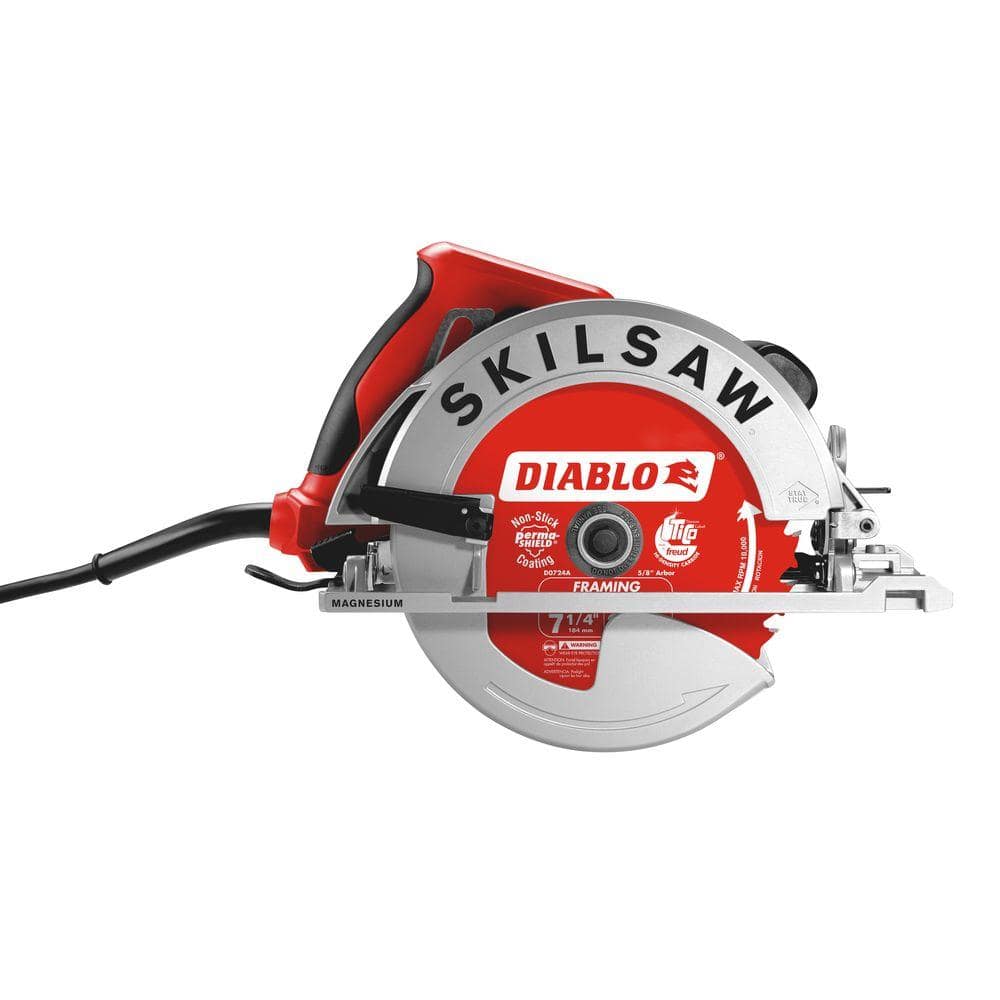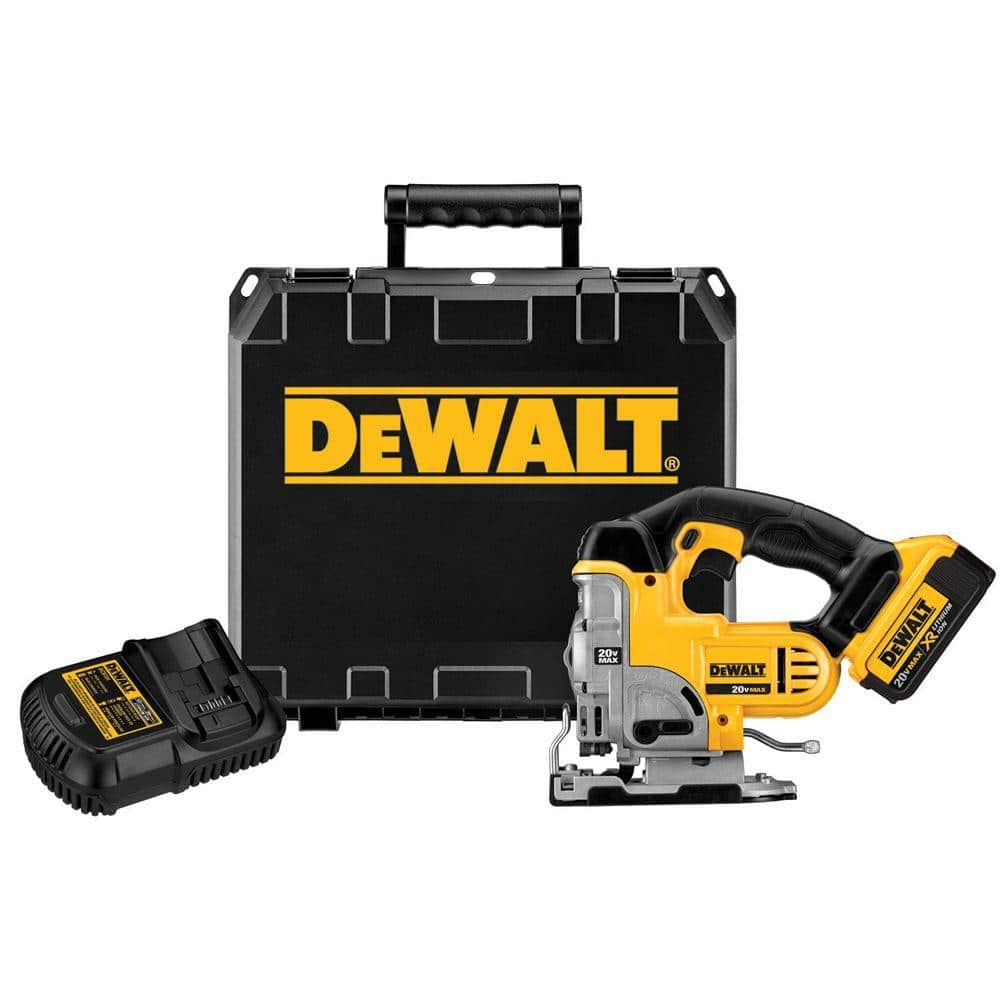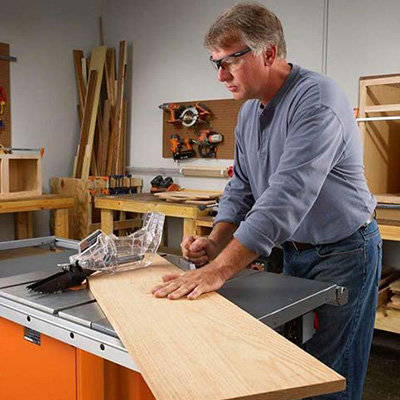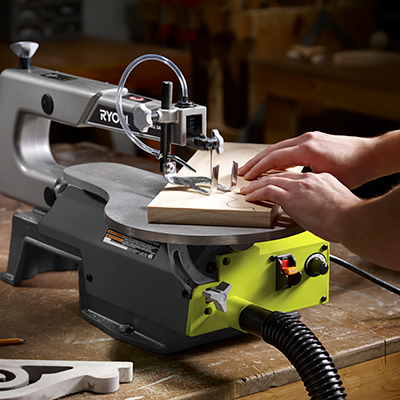Best Jigsaws for Your Project

Last updated June 16, 2025
Jigsaws are at home with the DIYer and the construction professional alike. They’re an excellent first power tool while also being useful for the experienced carpenter.
The best jigsaw for you depends on several factors. Do you prefer a barrel grip or top handle design? Do you want the freedom of battery power or do you prefer a power cord? How does cost figure into your decision?
Table of Contents
How Jigsaws Work
Features to Look For
Jigsaw Blade Selection
Battery or Corded Power
Tips for Using a Jigsaw
Jigsaw Safety
How Jigsaws Work

Jigsaws have great versatility that comes from a wide variety of blade options. They can be used to make complex shapes or cut materials that other saws can't. While they don't excel at jobs like ripping long, straight lines, they are among the most versatile power tools that are made today.
- A jigsaw cuts by moving the blade up and down through the material while the user propels and guides the saw.
- The cut is made perpendicular to the saw’s shoe.
- Jigsaws can follow curved lines. A regular blade can follow open curves but a scroll blade can cut tight curves.
- Wider blades are better for cutting straight lines.
- They are often used to cut notches. The leading edge of the cut is straight as opposed to the curved leading edge made by a circular saw. A jigsaw is easy to stop at a precise point and back the saw out of the cut.
- Inside cuts can be made by drilling a hole through the material, then putting the jigsaw blade through the hole to position the saw.
- Trim carpenters use jigsaws to make coping cuts for joints on crown and base moldings. A coping cut is where the detailed outline of the molding is followed and material is cut from the back so two pieces can be joined together seamlessly.
- Jigsaws aren’t best for long, straight cuts. Circular saws are better for that. But, they are sufficient for short straight cuts, like trimming lumber to length across the short dimension.
- Many jigsaws have an oscillating motion in addition to the reciprocating motion. This can make for faster or smoother results, depending on the material and blade being used. As with any tool, experiment with scrap material before moving on to the workpiece.
- There is another tool, the reciprocating saw, that uses a similar motion but the tools are set up differently and have different purposes. A reciprocating saw is more of a demolition and heavy construction tool while a jigsaw is more for carpentry.
Features to Look For

The best saw for you has the combination of features you need. No saw will have every feature, as some are either-or, like the style of grip or source of power.
Jigsaw features include:
- Light that shines directly on the cutting area
- Air blower to move dust away from the blade
- Adjustable foot for bevel cuts
- Tool-free bevel adjustments
- Oscillation adjustment
- Dust collection port
- Variable speed trigger
- Variable speed dial
- Top handle grip
- Barrel grip
- Anti-splinter or tearout reducing insert
- Battery power
- Corded power
- Tool-free blade changing
- Plastic shoe cover to prevent scratching material
- Ambidextrous controls
- Onboard storage for extra blades
- Laser line
Jigsaw Blade Selection

A jigsaw is a versatile tool due to the wide variety of blades that are available.
There are two types of shanks, T and U. The T shank attaches to the saw without tools and is the most widely used on current saws. With very few exceptions, any T-shank blade will work with any T-shank saw. You do not need to use blades that are the same brand as your jigsaw.
Many different materials can be cut with a jigsaw and various types of cuts can be made. For example, when cutting wood, there are blades that are optimized for cutting fast and blades that are designed to cut smoothly. You can pick between a blade that will hold a straight line easier or is better for cutting curves. Another option is there are blades that cut on the downward motion while most cut on the upward motion, and some blades cut from both directions to make a smooth surface on both sides of the material.
The blade’s packaging will tell what materials it was intended to cut and what quality of cut it should produce.
In general, finer teeth will produce a smoother cut, but only to a point. A fine-tooth blade intended for thin metal will not cut wood very well at all. It’s a good idea to familiarize yourself with different blade types and which material each blade cuts best.
Most blades used sharpened teeth to cut, but some use an abrasive compound or diamond grit. Some teeth are carbide.
With the right blade installed, one jigsaw can cut all these different materials:
- Wood
- Engineered wood
- Plastic, HDPE, plexiglass, laminate
- Fiberglass
- Foam and insulation
- Metal, sheet metal, thicker metal, cast iron
- Tile, ceramic and porcelain
Battery or Corded Power

Just like most power hand tools, many battery-powered jigsaws rival or exceed the power of corded saws. If you need help deciding between corded and battery, here are a few questions to help decide.
- Do you need a more maneuverable saw? The lack of a power cord makes the saw easier to turn while cutting. In general, a battery jigsaw is easier to maneuver, due to there being no cord in the way. Some manufacturers make compact battery saws that fit into tighter spaces.
- Is cost the main factor? Corded saws can be less expensive than battery saws, although there is more overlap as battery power gains preference among tool buyers.
- Are you already committed to a battery platform, and if so, does your tool company make the jigsaw you want? If yes, then buying another tool on your battery platform makes sense. If not, consider a corded model with the features you need.
- Will you be working in a workshop with easy access to a power outlet? If not, a battery saw offers more portability.
Tips for Using a Jigsaw

Here are a few cutting tips that may help you decide which saw is best for you.
- With standard jigsaw blades, the blade cuts on the upstroke, an action that keeps the saw tightly against the stock to minimize vibration. This also means that tearout will occur on the top of the cut, so keeping the good face of the material down when a clean cut occurs is important.
- With a reverse-tooth blade, the cutting action is on the downstroke, so position the good side up. Turn off orbiting action when using a reverse-tooth blade, and be aware that you'll have to supply downward pressure on the saw's body to reduce its tendency to jump.
- When precision really counts, saw just to the waste side of the marked cutline, then sand to the line for perfect results.
- Sideways pressure on the blade during a cut causes problems. With side pressure, your cut can go out of square and increased friction heats the blade, shortening its life and burning the cut.
- Guide the saw with a steady forward motion.
Jigsaw Safety

- Be aware that the blade protrudes through the other side of the material being cut. Keep yourself and everything you don’t want cut away from the protruding blade.
- Don’t push the saw too hard. Forcing the saw through the cut can break or bend the blade and makes a rougher cut.
- Remove the battery or disconnect from power before changing the blades, making adjustments or performing maintenance.
- Jigsaws are loud and cutting produces dust. PPE for ears, eyes and breathing are recommended.
- As with any power tool, don't wear jewelry while using it. Tie back long hair and secure loose clothing.
- It's helpful to clamp the workpiece to a workbench when using a jigsaw. This can result in a cleaner cut and safer operation.
- Read the operator’s manual and follow the instructions to operate a jigsaw.
We have the tools to make your job easier. For one-off projects and quick home renovations, consider our jigsaw rentals. You can also use The Home Depot Mobile App to find everything you need.































